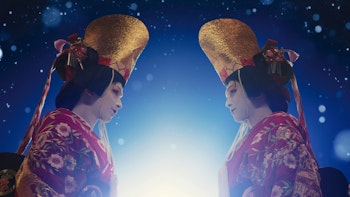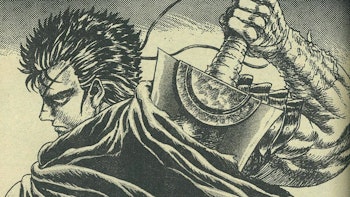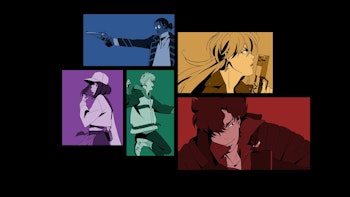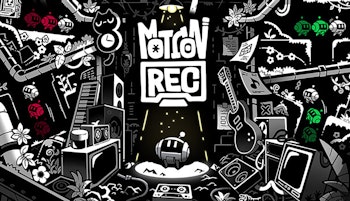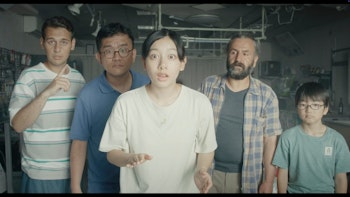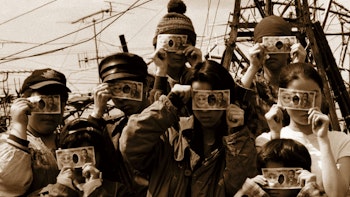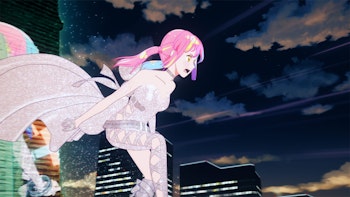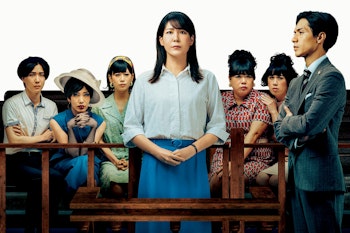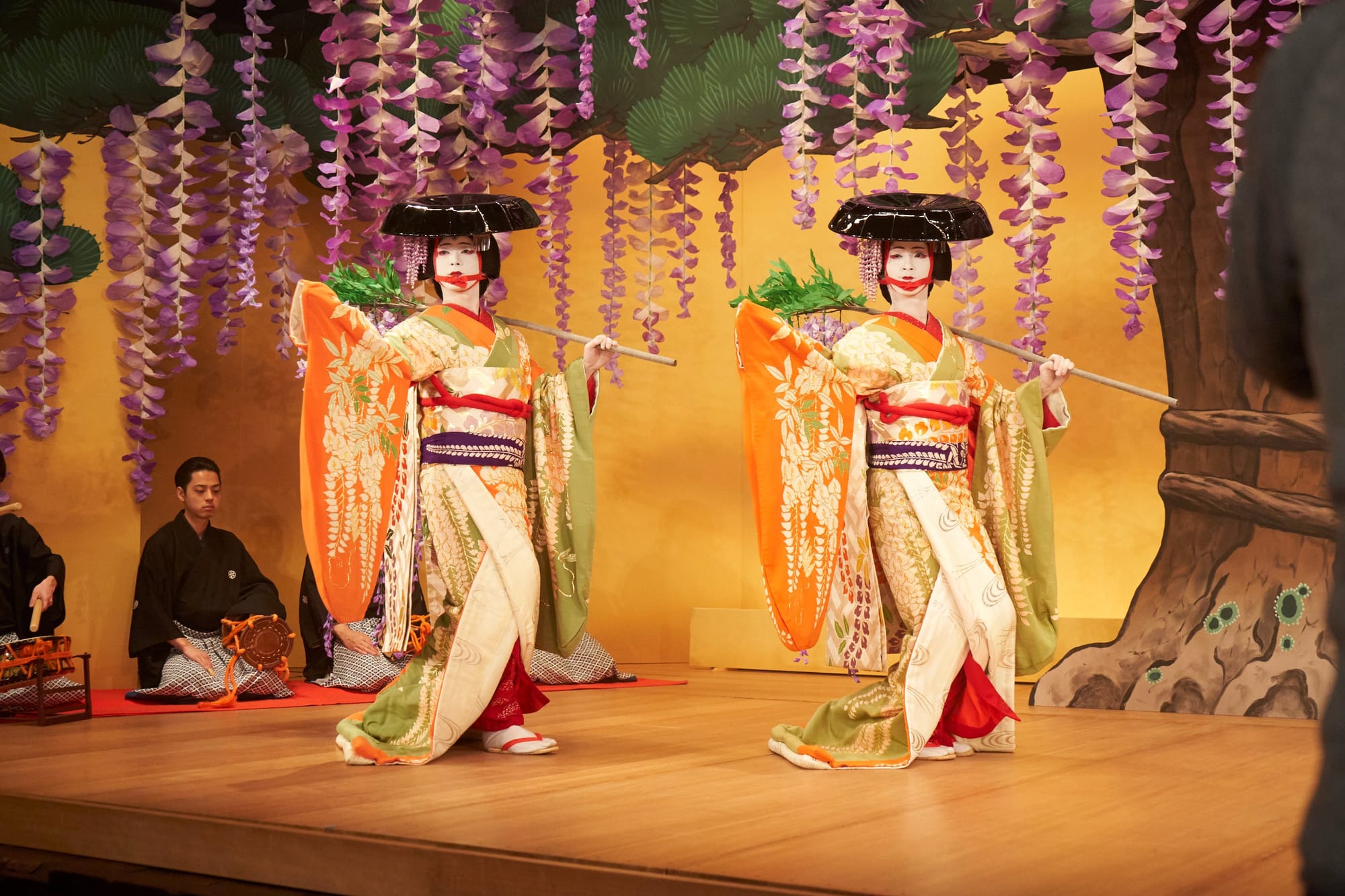
While kabuki is not yet a dying art form, it is not the thriving performance theater it was at its peak. Whereas in the 16th century and during its peak in the Edo period it was the primary form of theatrical entertainment and a rare experience where audiences of all classes would watch performances that could stretch to nine hours late, few dedicated theaters survive today. While it’s successful enough to see new performances and seeks to entice new generations with both original plays and IP-driven hits adapted from anime and games, its most grandiose and historic performances now rely on government funding to survive. Further, the demographics of primarily-retired audiences and curious tourists is emblematic of an art form in decline.
What doesn’t help is that it’s notoriously difficult to portray kabuki realistically on screen. Actors will train for decades from youth before they even hope to reach the stage due to the precise nature and mannerisms both those performing tachiyaku (male roles) and onnagata (men who portrayed women) would showcase on stage, meaning few actors exist today to play these roles. You can train an actor to sing for a role or learn a new skill their character is expected to know for a film, but that’s far harder with kabuki. And yet, Lee Sang-il’s Kokuho does just that.
To be a ‘kokuho’ is to be a national treasure, of which beyond the historical artifacts and structures given this status there are fewer than 50 living people with this designation for the traditional arts in Japan. The film begins in 1964 as Kikuo (Ryo Yoshizawa, played as a teenager by Soya Kurokawa) at the age of just 14 is performing to a small group of patrons in a ryokan in front of his parents and a small party of gatherers. A kabuki actor and friend of his father comes to watch their onnagata performance and is infatuated, but the night is cut short when yakuza kill Kikuo’s father as part of an ongoing feud.
He’s taken in by this actor, Hanjiro (Ken Watanabe), and trains alongside his son Shunsuke (Ryusei Yokohama, with Keitatsu Koshiyama portraying them as a teenager) to become actors. The resulting film takes place over the next 50 years to follow the lives of these actors against the backdrop of Kabuki’s declining place in Japanese society.
In tackling the authenticity challenge of portraying kabuki on and off the stage by bringing in kabuki actor Nakamura Ganjiro IV as an advisor and getting its lead actors to train in the art form for months under supervision from artisans of the discipline, Kokuho is a three hour epic that utilizes every minute of its extensive runtime to bring an awe-inducing glimpse into this world. A private-yet-public and highly traditional world that harms as much as it uplifts focused dedication to craft.
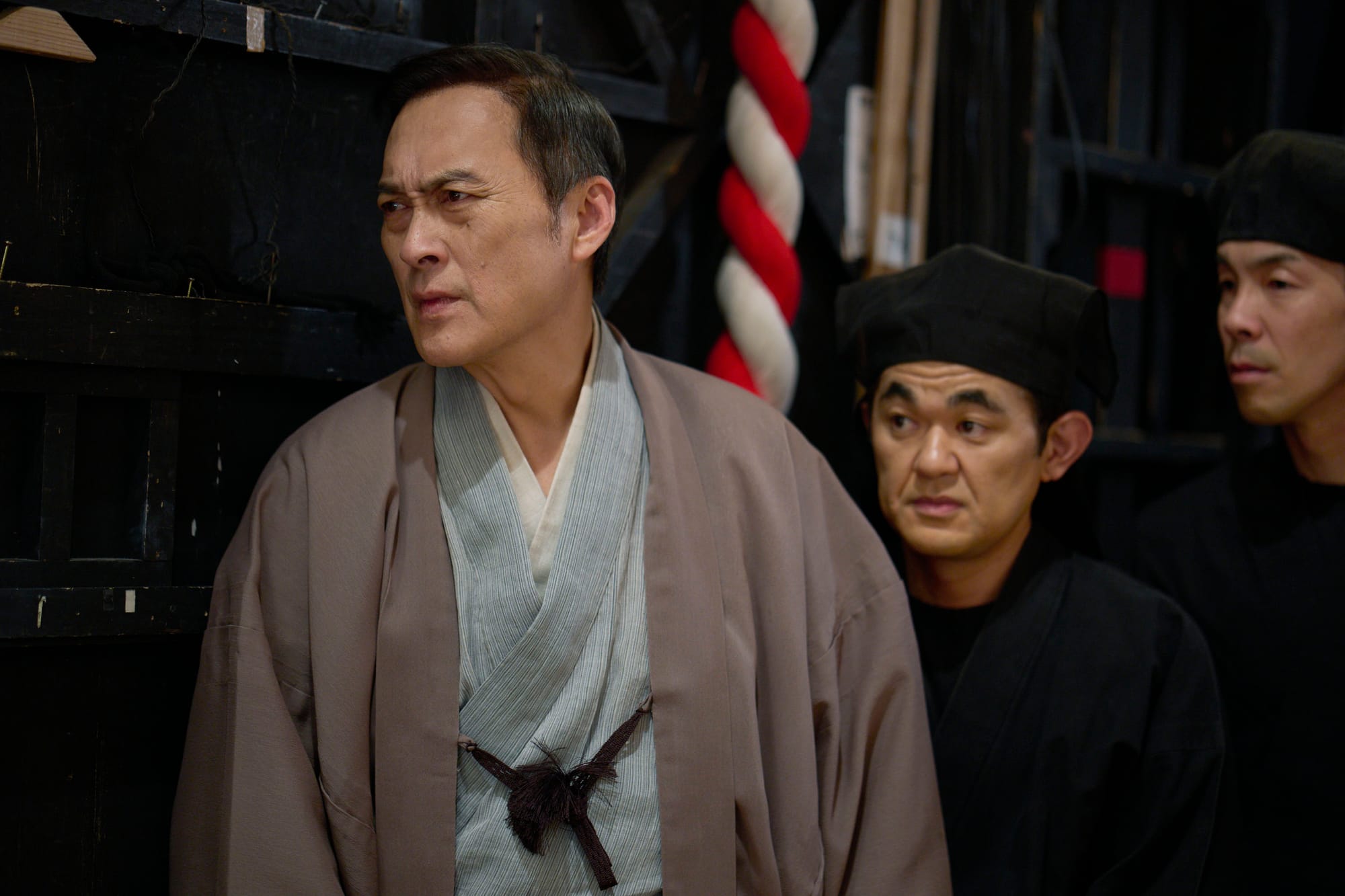
This continues from their earliest training. As Kikuo seeks to catch up to the years of additional experience Shunsuke has prior to his adoption the lessons are ruthless. Hanjiro is a brutal teacher, hitting and beating the boys for even minor deviations from correct form or leaving them to hold poses for hours till it comes natural. Teaching has an air of tradition that reeks of centuries-old techniques even in 1960s Japan, but the reason they persevere is this never comes at the cost of breaking the mutual respect between teacher and student. We see the compassion and care, and as they visit theaters amidst mostly-older acting talent there’s pride mixed with desire for how the minutia of the human body warps in performance.
It’s only many years later in the early 1970s where the finally reach the stage for a performance of Two Wisteria Maidens, which catapults the pair to relative fame within the kabuki sphere for their appearance and skill. It’s also where we get the greatest snapshot of what kabuki actually is by this late era of the art’s life, setting the tone for the film to come visually and tonally.
All performances of kabuki are faithfully recreated by the actors in full onnagata garb, with on-screen annotations noting the name of each piece. There’s an emphasis on the ingrained legacy of these shows built into their portrayal on screen, allowing us to enter the theater with the audience and witness its grand history both before and during their performance. Sequences can stretch at times to five or ten minutes each in length, during which even the minor movements of the hand and dragging feet underneath the weighty kimono and uchikake are scrutinized and lustfully captured with obsessive care as we glide with and around them and see the lights of the stage from their perspective.
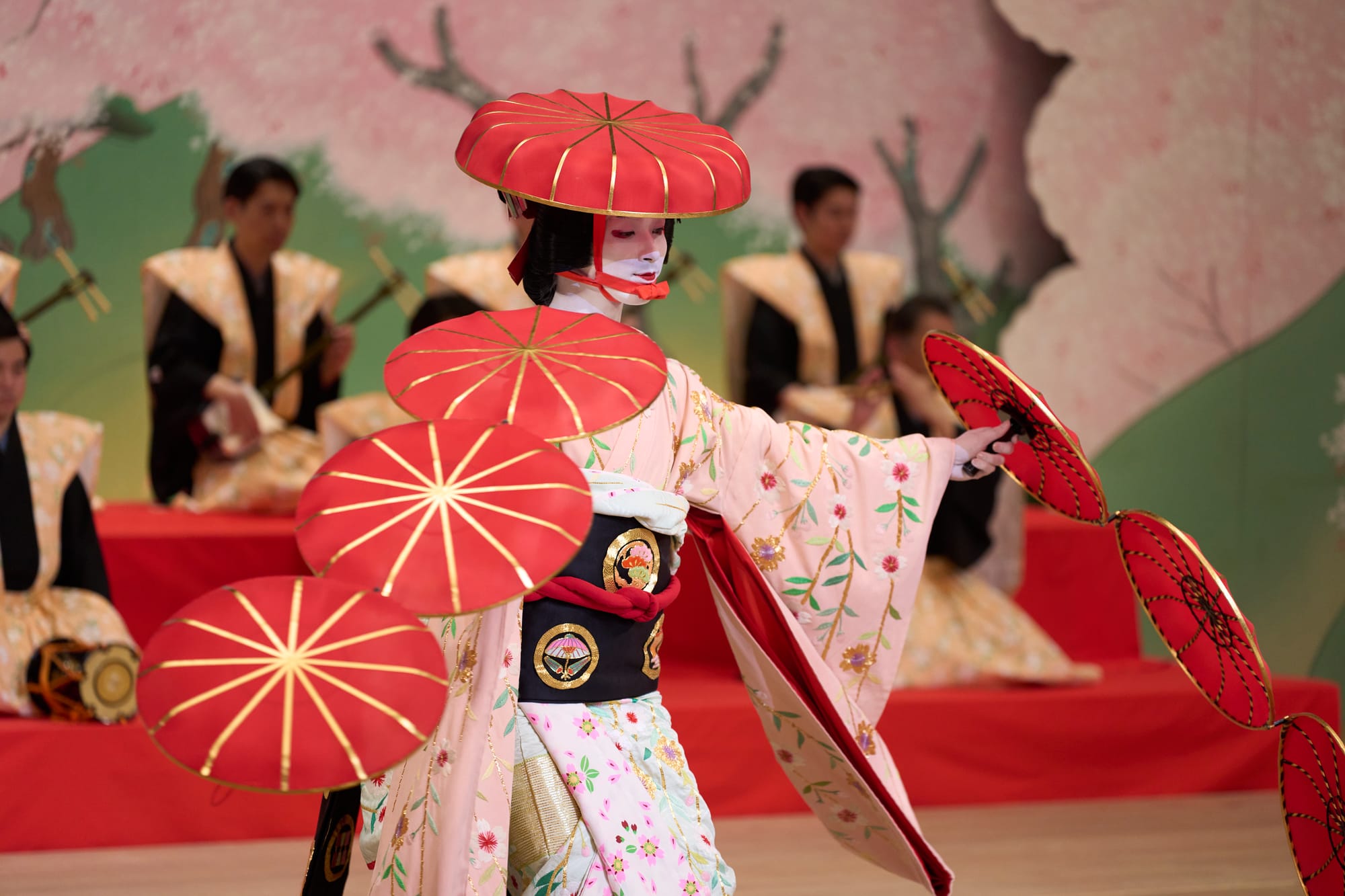
Had shorter or more distant sequences been used it perhaps might have been easier to fake a performance, but for a story so intent on capturing dying tradition and eternal appreciation for the art, such careful detail and close cinematography allows even lay audiences to notice details they otherwise would overlook. Exactly where the feet must travel to give the appearance of gliding across the stage or avoid tripping on the long tail of the uchikake, how hands are used in putting on makeup or in creating the illusion of femininity for male performers.
The camera leers on the stave of their necks as makeup is placed before a show, with often only the lips and hands and bare chest of characters are clear and visible to us in harsh close-ups as they change or perform. We’re practically touching these actors with how intimate they are, letting us see how this performance takes everything from them, on and off stage.
They can’t match the precision and grace of real actors, but it’s nonetheless impressive and a relatability that arguably enhances the core thematic drive of this film’s extended runtime. The one to become the kokuho will be one of these two stars, but the answer as to who will inevitable reach this pinnacle is clear to the audience from surprisingly early. Using such clarity, the film can instead focus on the brotherhood bond and passion that drives these characters both distant and together inside and out of performance.
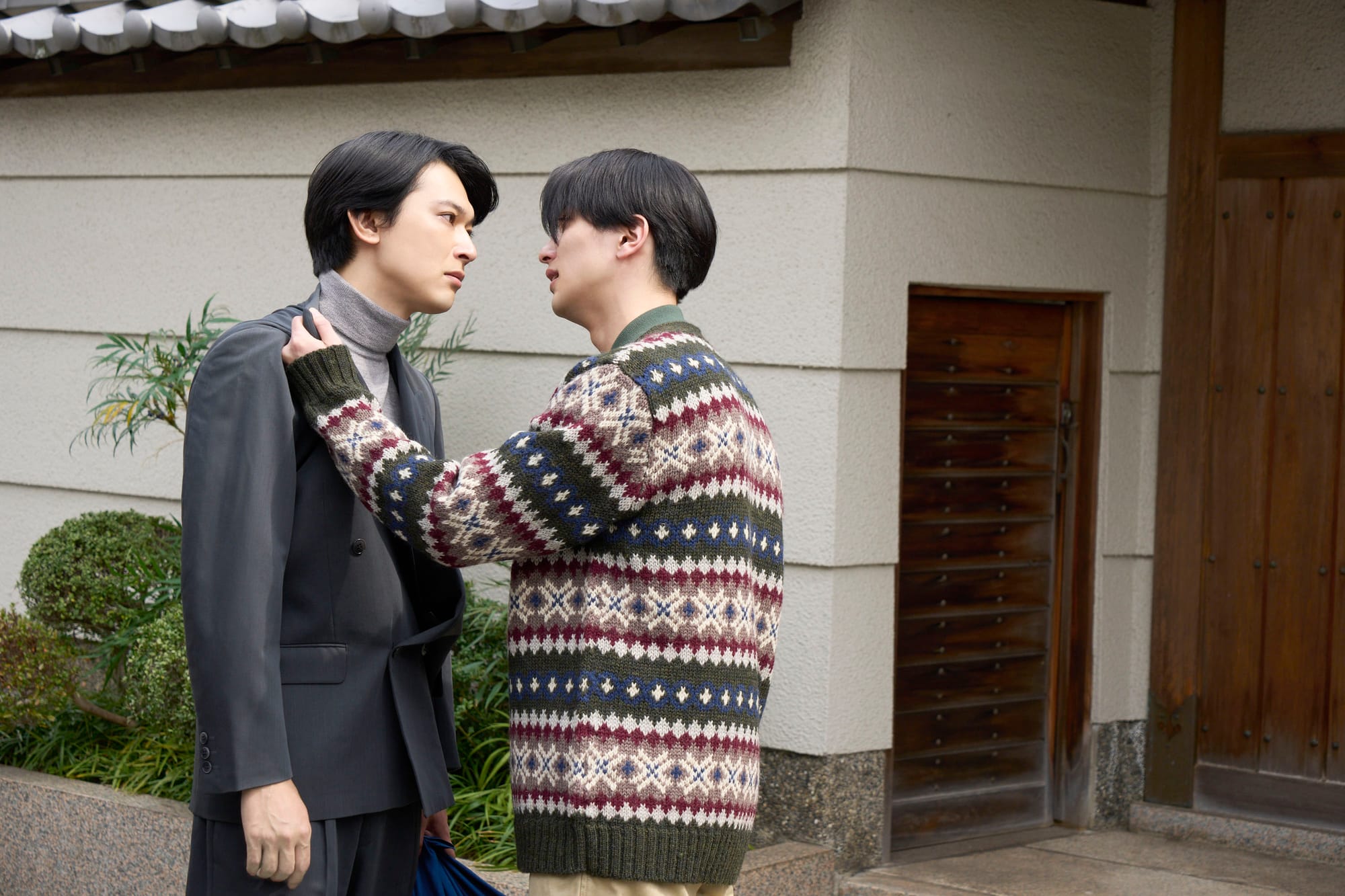
As the pair find love off-stage and the question of blood or talent in the realm of kabuki rises to the surface, the close-knit connection that brought these brothers to the fore splits them apart as one becomes further immersed in their art at the expense of everyone and the other leaves in an attempt to balance. It’s here the harsh realities of those beyond the pedestal of kabuki are painfully illuminated: talent doesn’t stop you becoming a poor, disrespected washup performing weddings to scrape by and survive.
In the peak of the Edo period onnagata would not only embrace femininity on stage, but their stability and desire for perfection meant that many would embody the role on the streets and in daily life. Never would you see an onnagata dressed as a man, and they were adulated for it. Nowadays it can be impossible for more than a few to even survive, and it can all feel too much.
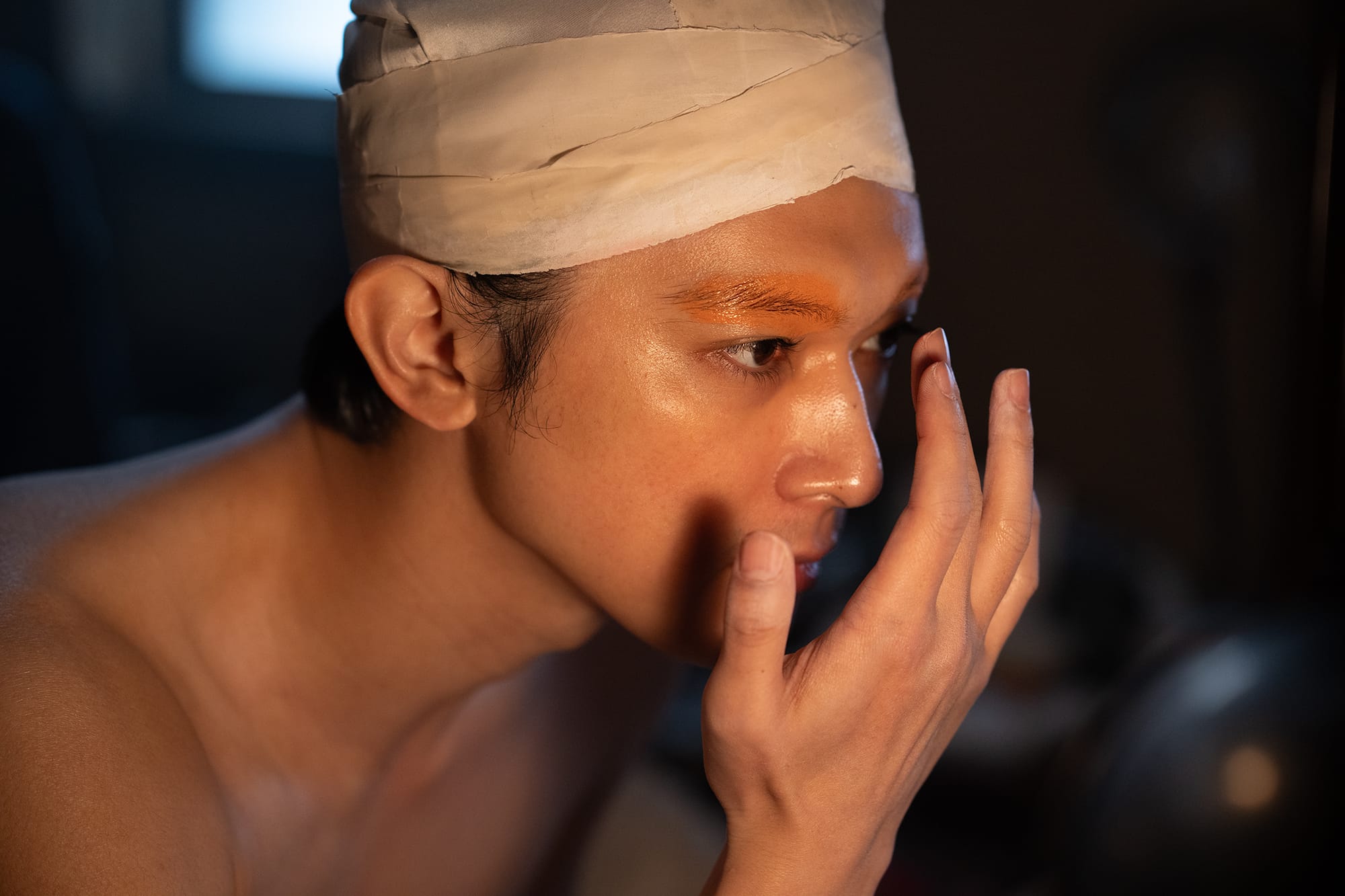
This bond, the tragedy of the decline of an art form that, for anyone who gives it a chance, will be left astonished by just what it takes and the beauty of costume, music and acting as one. Kokuho is a film that uses an inscrutable craft as a window deep into these souls, through illness, triumph and tragedy, to show how the years of our lives and the history that long precedes us shapes our relationships and the paths we take in the present. How we love those closest even in our lowest for the experiences we had and could (or may never again) see.
As the credits roll, it’s hard to believe either actor playing our two leads are not kabuki talents, or that the actors and story portrayed here are the work of fiction. In somehow making kabuki accessible and capturing its beauty both on and off the stage, Kokuho is a triumph of filmmaking because its atmosphere, its performance, its heart, its loneliness, and its respect of tradition, linger long after the credits have stopped rolling.

